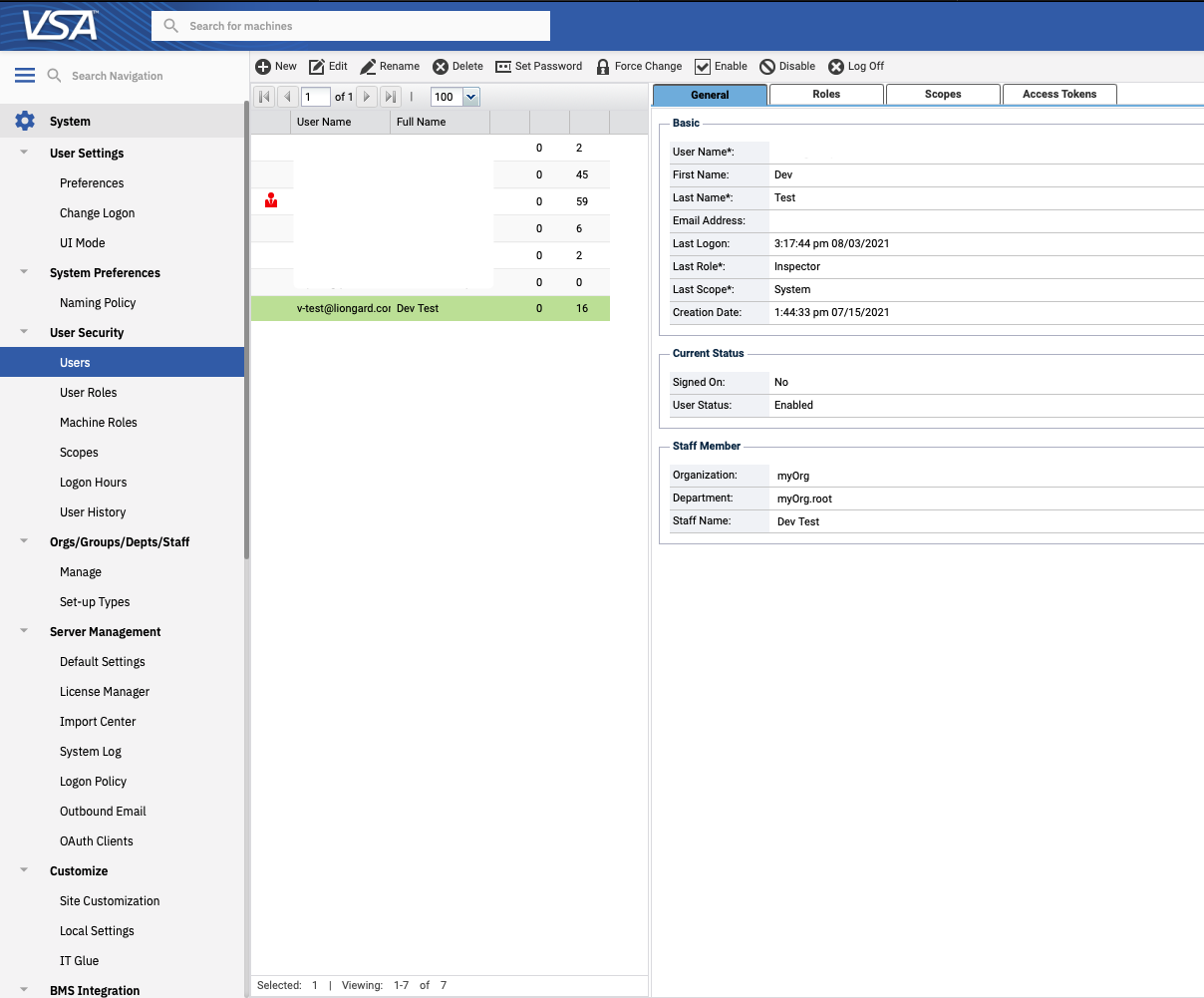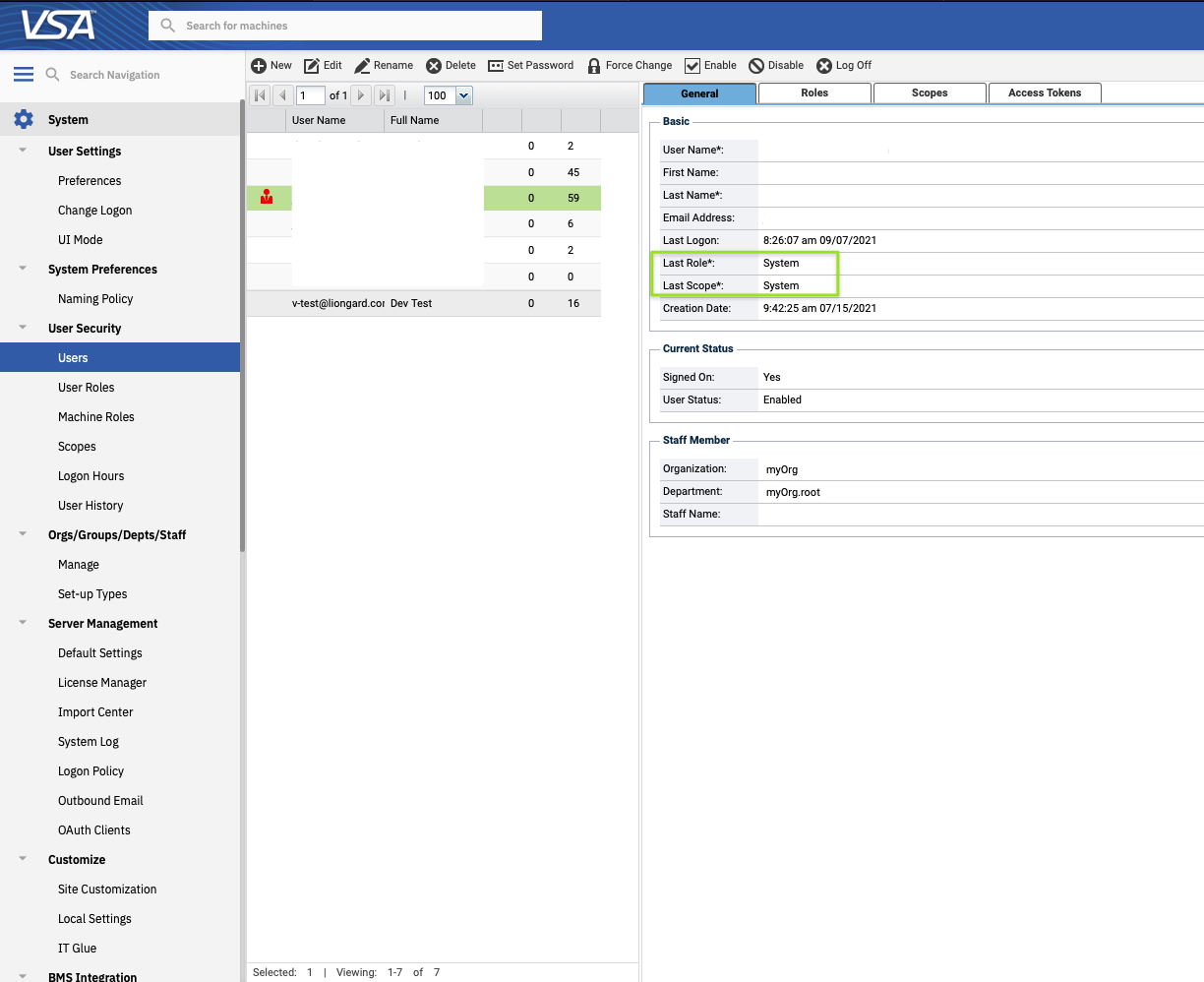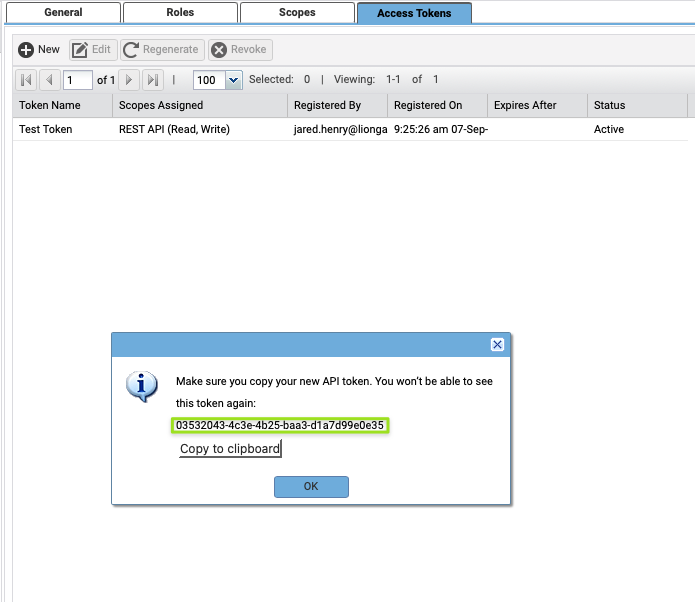Kaseya VSA
This document provides the steps required to configure the Kaseya VSA Inspector.
Quick Details:
Recommended Agent: On-Demand
Supported Agents: On-Demand or Self-Managed
Is Auto-Discovered By: N/A
Can Auto-Discover: Kaseya VSA Child Tenants
Parent/Child Type Inspector: Yes
Inspection via: API
Data Summary: Here
Overview
See it in Action
Kaseya VSA Version Support
The Kaseya VSA Inspector only supports the SaaS V9 version of Kaseya VSA. On-premises instances and the Kaseya VSA V10 are not currently supported.
Inspector Preparation Setup
Generate API Access User and Token
- Log in to your Kaseya VSA instance. In the navigation menu, select System > User Security > Users

System Role Unavailable
If the default System role is not available, you can create a new role using the Kaseya Advanced role type and use that role when configuring your new user.
- Create a new account (or use an existing account) with the System Role and Scope. Record Username to use in Liongard Inspector Setup.

- Navigate to the Access Token tab and select New.
- Input a Token Name and leave the "Expires after the date" field blank to indicate no expiration date.
- Under Scopes Assigned select Rest API (Read, Write)

- Copy the Token for use in the Inspector Setup below.

Liongard Inspector Setup
Step 1: Parent Inspector Setup
Since Kaseya VSA is a multi-tenant system where a single portal is used to manage many Environments, you will set up a single "Parent" Inspector with the Access Token created above that will then auto-discover "Child" Inspectors for each Environment.
In Liongard, navigate to Admin > Inspectors > Inspector Types > Navigate to the Kaseya VSA Inspector > Add System.
Fill in the following information:
- Type of Inspector: Parent
- Environment: Select your MSP's Environment
- Friendly Name: Suggested Naming: [MSP Name] Kaseya VSA Parent
- Agent: Select On-Demand Agent
- Inspector Version: Latest
- Kaseya VSA URL: The URL of your Kaseya VSA instance, including the protocol (http://, https://)
- Username: Username of the System User created, or used, in the Inspector Setup Preparation above
- Access Token: The Access Token copied in the final step of Inspector Setup Preparation above
- Schedule: The Inspector will default to run once a day at the time the Inspector is set up. Here you can adjust the schedule
Select Save. The Inspector will now be triggered to run within the minute.
Step 2: Child Inspector Setup
After the first run of the Parent Inspector, your client Kaseya VSA organizations will be Auto-Discovered in the Discovered Systems tab on the Inspectors > Kaseya VSA page.
Navigate to the Discovered Systems tab in your Inspectors > Kaseya VSA page
- Activate or Archive your Discovered Systems by ensuring that they're mapped to the correct Environment > Check the checkbox to the left of Inspector(s) > Select the Actions drop down menu > Activate Launchpoints
Optional: Turn on Flexible Asset/Configuration Auto-Updating
If you would like this Inspector's data to be sent to ConnectWise and/or IT Glue, turn on Flexible Assets/Configurations for this Inspector:
- ConnectWise: Admin > Integrations > ConnectWise > Configuration Types > Confirm the "Configuration Auto-Updating" toggle is enabled
- IT Glue: Admin > Integrations > IT Glue > Flexible Assets > Confirm the "Flexible Asset Auto-Updating" toggle is enabled
Updated 4 months ago
